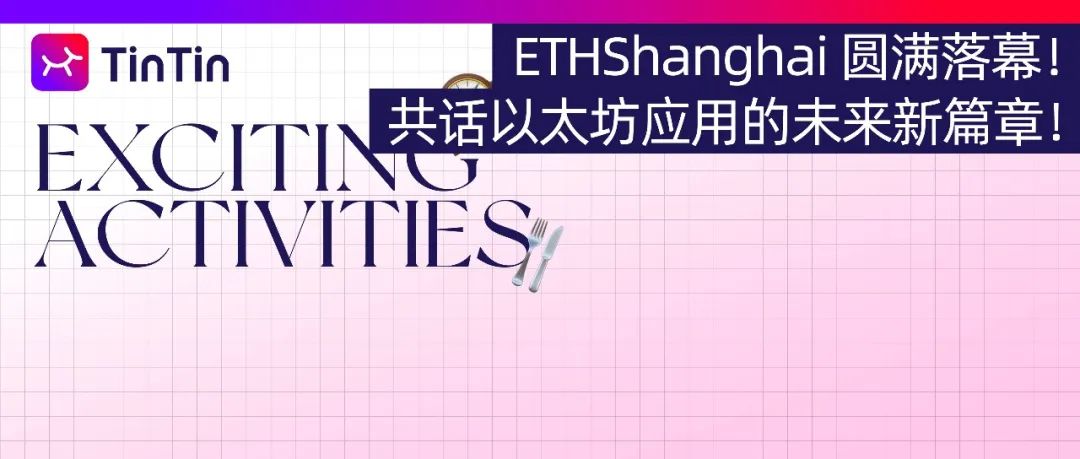
ETHShanghai2024, co-organized by core members including ETHPanda, TinTinLand and ChainFeeds, came to a successful conclusion on October 16, 2024!
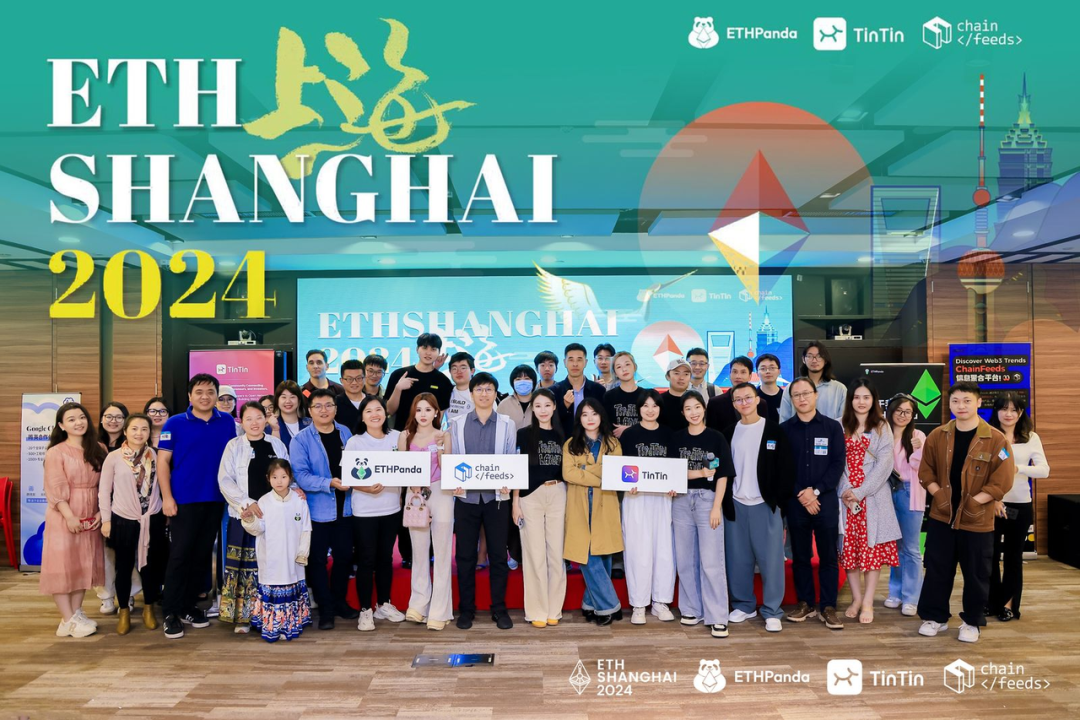
With the development of Ethereum's future applications as the core topic, this conference attracted widespread attention from global developers and industry leaders. More than 1,000 people registered for the conference , and more than 340 participants actively participated in the event. The atmosphere was warm, and the online live broadcast was viewed nearly 3,000 times. During the conference, the guests not only shared their insights on the progress of Ethereum technology, but also discussed in depth the future trends and potential opportunities of the Web3 ecosystem.
Ethereum Ecosystem Expansion and Future Outlook
Ethereum co-founder Vitalik Buterin reviewed the development path of Ethereum and looked forward to the future through online sharing. When reviewing the technological progress of the Ethereum project since its launch in 2013, Vitalik focused on Layer2 technology, which has helped Ethereum significantly reduce transaction fees and improve user experience. Vitalik also pointed out that the combination of EIP-1559 and Layer2 has greatly shortened transaction confirmation time, allowing most transactions to be confirmed quickly. In addition, he emphasized the importance of smart accounts and zero-knowledge proof technology in improving account security and privacy protection.
Looking ahead, Vitalik expects that in the future, Layer 2 Ethereum will be able to process more than 100,000 transactions per second , and transfers between different chains will be completed within 2 seconds , thus forming a unified user experience. At the same time, he pointed out that Ethereum's infrastructure is expanding, especially in terms of security, and the security link between chains is more important than relying solely on EVM.
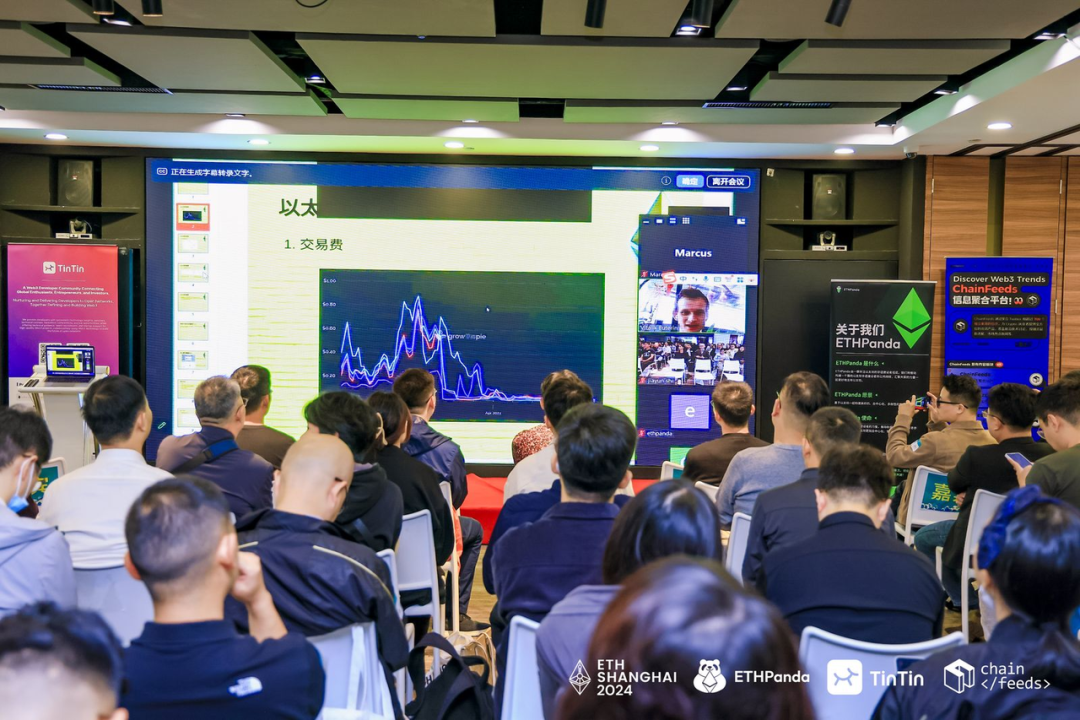
The discussion on this topic continued in the subsequent roundtable discussion. ChainFeeds co-founder Zhixiong Pan hosted the discussion with Ethstorage founder Qi Zhou, Namefi.io CEO Victor Zhou, and ABCDE partner Siyuan Han to discuss Ethereum protocol upgrades from the perspective of application developers. All three guests believed that future Ethereum upgrades will greatly improve the developer experience and user interaction experience, but at the same time, more reasonable processes and extensive community participation are needed to ensure the smooth implementation of these upgrades.
Regarding the new opportunities that Ethereum protocol upgrades may bring, Qi Zhou, founder of Ethstorage, emphasized that EIP-7752 will bring breakthroughs in data availability and security, especially providing more flexibility for the management of smart contract accounts. Victor Zhou, CEO of Namefi.io, mentioned the impact of EIP-4804's wallet standardization on cross-platform operations. Siyuan Han, partner of ABCDE, added that Layer2 and EIP-4844's data compression technology will reduce the cost of DApp and DeFi and promote their further development.
Regarding whether the protocol upgrade process needs further improvement, Victor Zhou suggested that in some cases more automated tools could be introduced to speed up the advancement of less complex proposals. Siyuan Han suggested that in future protocol upgrades, more attention should be paid to improvements in the user experience, especially how to make ordinary users feel the benefits of the upgrade, rather than just technical optimization.
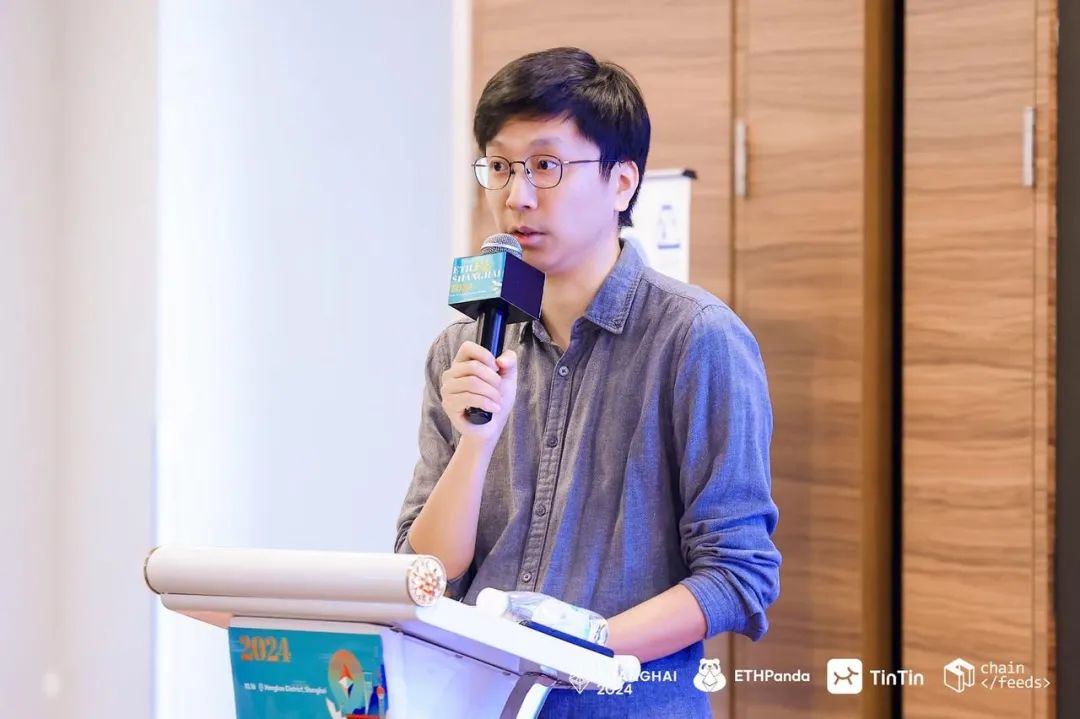
The afternoon conference was grandly opened by Vera, BD director from TinTinLand , marking the official start of an exploration full of creativity and cooperation. TinTinLand is a developer community dedicated to the Web3 field, focusing on promoting the growth and innovation of developers. By gathering outstanding developers from around the world, TinTinLand not only provides them with technical support and learning opportunities, but also is committed to empowering the next generation of developers to help them define and build the future in the open network.
As a technology-driven community, TinTinLand works with developers, communities and media partners with business insights in the industry to provide rich resource support. Whether through online technical courses, in-depth interpretation of technical content, or AMA, offline events and hackathon events, TinTinLand always takes developers as the core to create a platform to help developers grow rapidly and promote technological change.
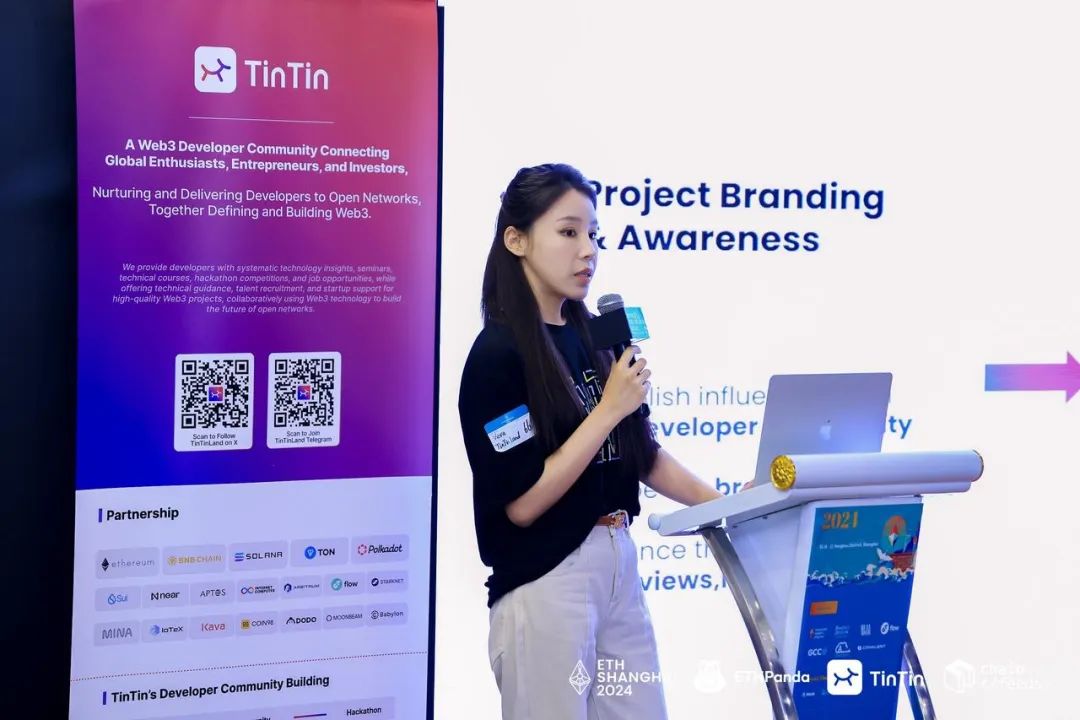
Then in the roundtable discussion in the afternoon, independent researcher Pignard served as the moderator and talked with Taiko ZK engineer Cecilia Zhang, Mint blockchain co-founder Shier Han, Morph developer relations director Luka, Gear Foundation developer Hangbiao and DataDance CEO Geoffrey Tong , focusing again on the value capture issue of Layer2.
The roundtable discussed the impact of Uniswap launching UniChain. It is generally believed that this is Uniswap optimizing the user experience by integrating more closely with the Ethereum ecosystem, not deviating from Ethereum. At the same time, the discussion also mentioned the issue of L2 liquidity fragmentation. Shier Han, co-founder of Mint blockchain, mentioned the possibility of cross-chain liquidity sharing through shared liquidity pools. Luka, head of developer relations at Morph, said that liquidity fragmentation is a realistic problem, but it is not completely negative. The existence of L2 itself has attracted more projects to enter the Ethereum ecosystem, enhancing the compatibility and collaboration of the entire ecosystem. DataDance CEO Geoffrey Tong added that liquidity fragmentation is a natural phenomenon in the development of the industry, similar to the ICO boom in the past. The market will eventually survive the fittest, and liquidity will flow back to L2 projects with practical applications.
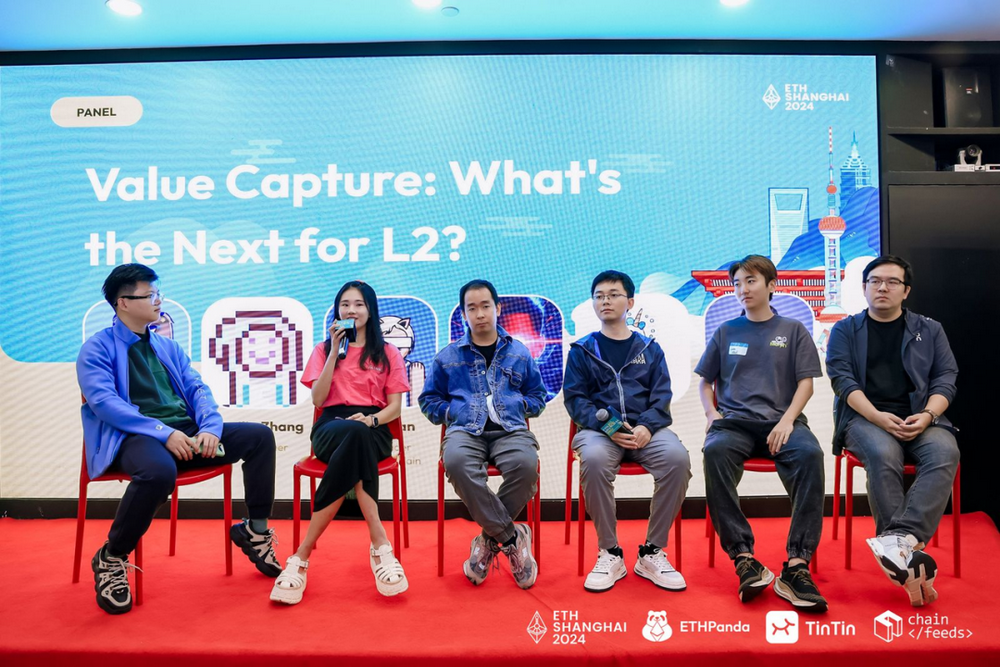
When discussing the future development of L2, Taiko ZK engineer Cecilia Zhang mentioned Taiko's Base Rollup and Pre-confirmation work, aiming to achieve the integration of L1 and L2 , and expected to see significant progress in the second or third quarter of next year. At the same time, Gear Foundation developer Hangbiao emphasized that the key to the development of L2 lies in solving the problems of asset interoperability and security . He suggested learning from Cosmos' IBC protocol or Polkadot's cross-chain solution, especially to ensure the security and convenient operation of user assets.
In the second half of the conference, Momir Amidzic, senior director of IOSG Ventures, shared a keynote speech titled "Why does IOSG consistently invest in the Ethereum ecosystem?" Momir Amidzic emphasized that Ethereum is still one of the most powerful blockchains , with the largest number of developers and a mature technology stack in the world, especially in technical fields such as infrastructure, expansion solutions, and account abstraction. However, Momir Amidzic also pointed out that there are currently some disputes in the Ethereum community regarding core goals and positioning, which has led to confusion and challenges in governance.
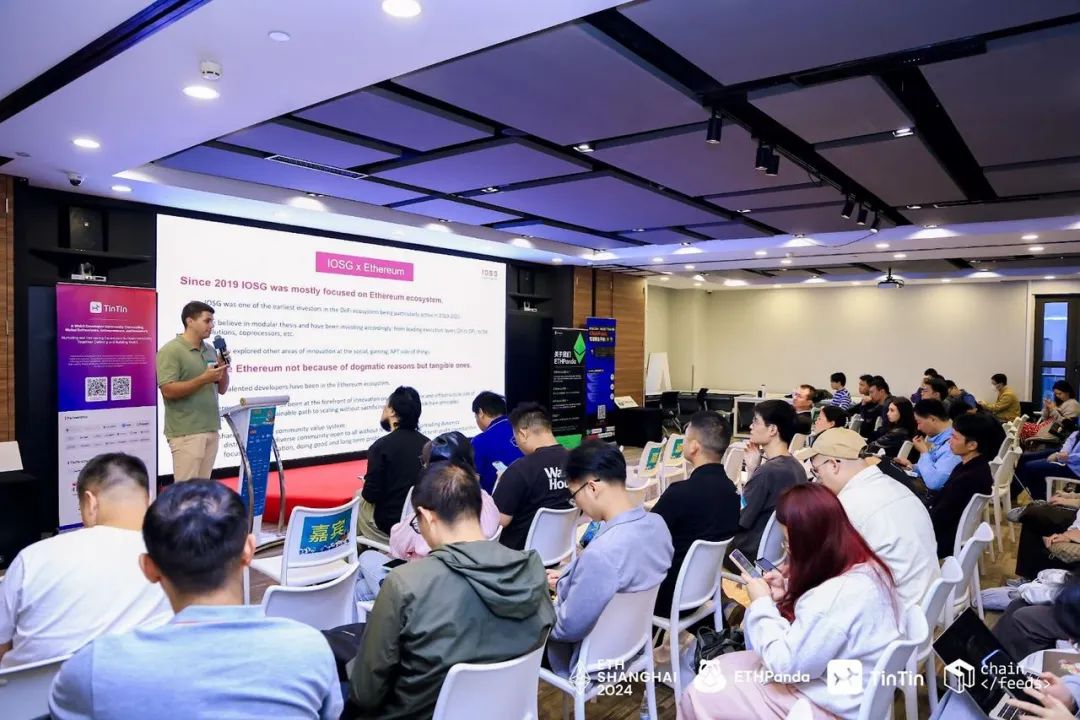
In order to meet these challenges, Momir Amidzic proposed an innovative governance model, which is to adopt a model similar to "cyber state" . He believes that a "benevolent dictator" can be elected by the community to lead the community and realize the vision of Ethereum in a limited time. This model can maintain the principle of decentralization while improving decision-making efficiency, helping Ethereum cope with the current governance dilemma and promoting the long-term development of the ecosystem.
Data, Privacy and Security
In the discussion on data, privacy and security, several speakers delved into key topics such as cryptography, privacy protection and data availability. First, Xiang Xie, co-founder of PADO Labs, emphasized the importance of data as a core asset of Web3 and raised the challenge of insufficient data in Web3. He suggested introducing Web2 data into Web3 through "Vampire Attack" without direct communication with Web2 service providers.
In the specific implementation process, Xiang Xie shared a cryptography-based verification and computing framework. This framework uses encryption technology to obtain data from Web2 and ensures the safe use of this data in the Web3 environment through fully homomorphic encryption (FHE). At the end of the speech, he expressed his expectations for Web3 technology in the fields of privacy payment and encrypted computing.
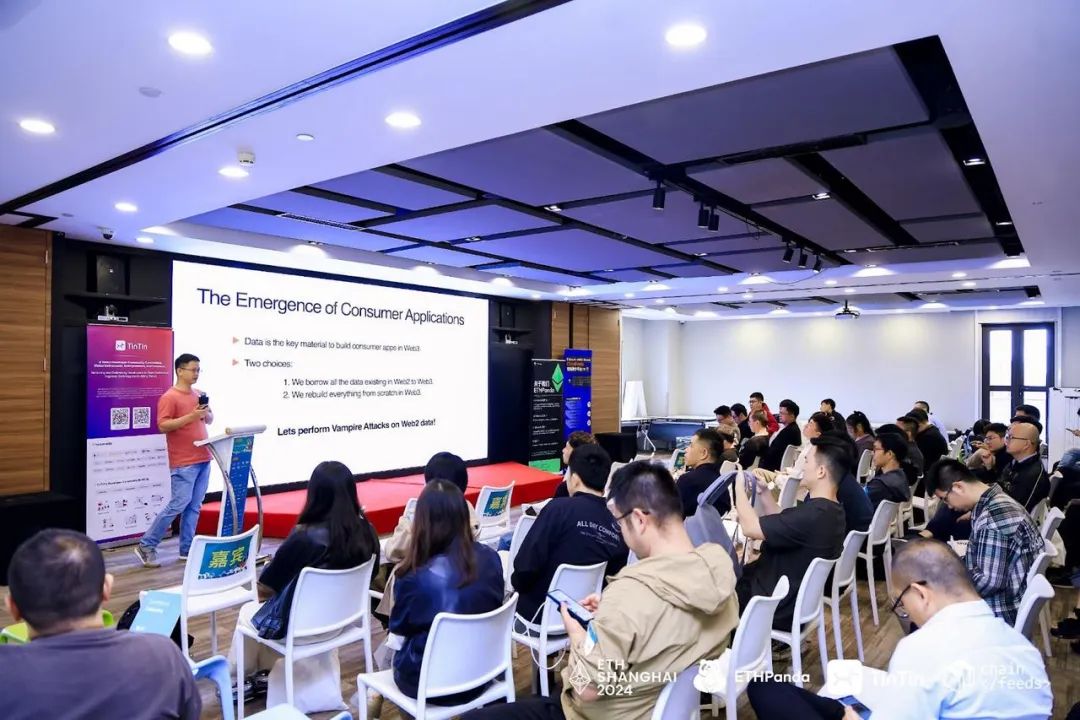
Next, Arthur Nie, CTO of SightAI , also discussed the potential of FHE technology in enhancing data privacy and security, focusing on their project SightAI. Through Verifiable Homomorphic Encryption (Verifiable FHE), SightAI ensures the credibility and transparency of on-chain computing results, providing strong protection for data privacy and security. Looking ahead, Arthur Nie predicts that the combination of FHE and blockchain technology will bring more innovations, especially in application scenarios such as data privacy, decentralized identity authentication, and on-chain gaming.
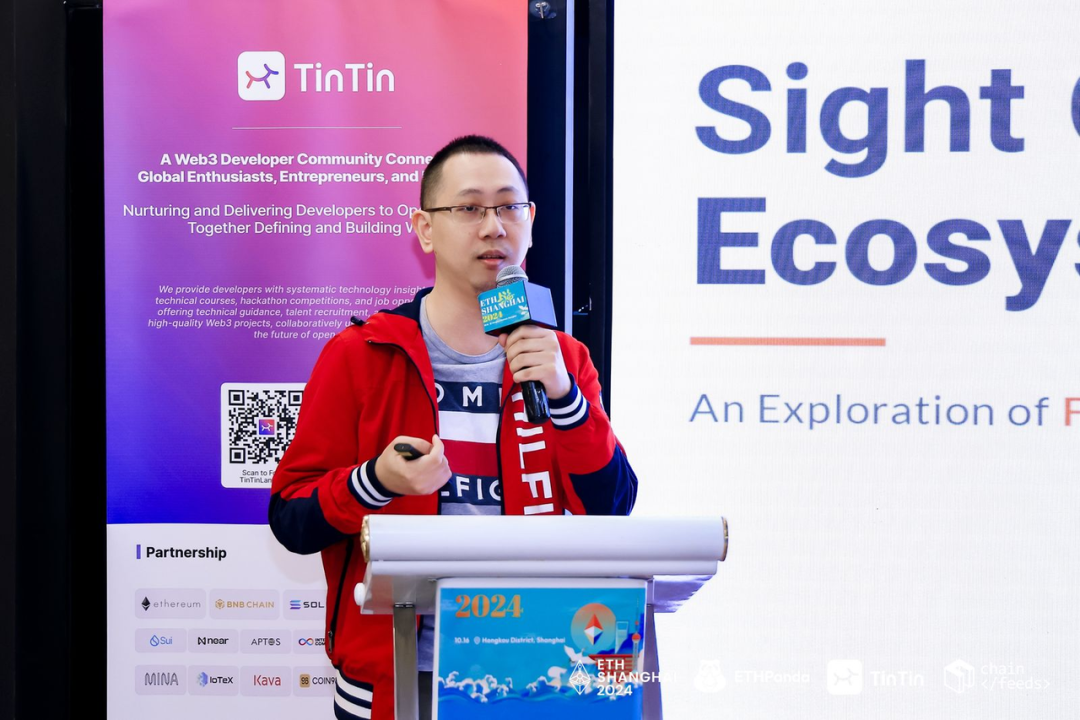
Ganesh, co-founder of Covalent , introduced how Covalent solves the problem of long-term data availability through its data infrastructure. Ganesh pointed out that through decentralized data storage solutions, Covalent can ensure that even if Ethereum deletes historical states, users can still access these important data to ensure the efficiency of the consensus, settlement and execution process of the Ethereum network.
Ganesh also introduced the "RUN EWM" campaign launched by Covalent, which encourages users to support decentralized data storage by running light clients and provides a 25% annualized profit reward.
Web3 infrastructure and ecological development
In the discussion on Web3 infrastructure and ecological development, many guests brought profound insights from different perspectives, showing the innovation and driving force in their respective fields. First, Bohge Tang, head of developer relations for Flow in Asia Pacific, gave a detailed introduction to the origin, current status and future development strategy of the Flow blockchain. He emphasized the design concept of Flow, which is a public chain designed for large-scale adoption. In addition, Bohge Tang also mentioned Flow's recent move to join the EVM ecosystem , saying that this move allows applications and smart contracts on Ethereum to be seamlessly deployed on the Flow network and to enjoy the unique performance optimizations and features provided by Flow, including account abstraction and complex transaction processing. This allows developers to take advantage of Flow's efficiency and user-friendliness while taking into account the compatibility of Ethereum applications.
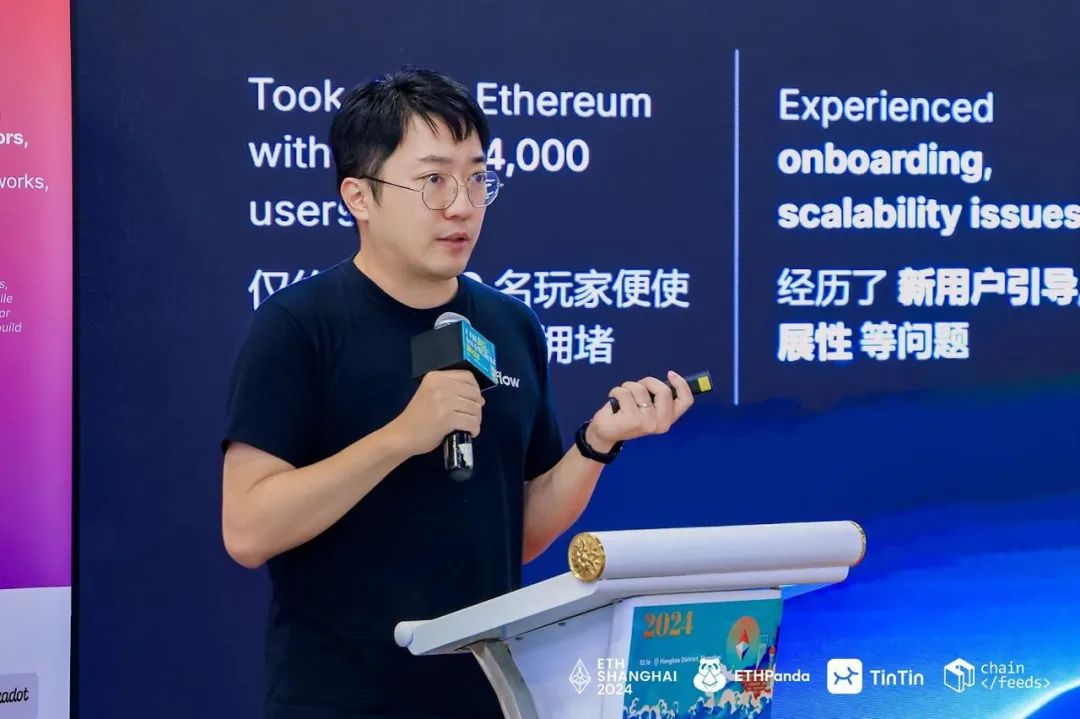
Hangbiao, head of developer relations at Gear Foundation, shared recent developments at Gear, focusing on two major projects: Vara Network and Gear EXE computing network . In addition, Hangbiao also mentioned the upcoming Vara Mega Hackathon event, which will be held on January 11, 2025 in collaboration with Oneblock, Openbuild, and HackQuest, with a total prize pool of up to $9,000 . To further support developer innovation, Gear also offers the Web3 Grants program to encourage more developers to build innovative projects on its platform, not limited to GameFi, DeFi, or infrastructure applications.
🔗 Application link: https://vara.network/grants
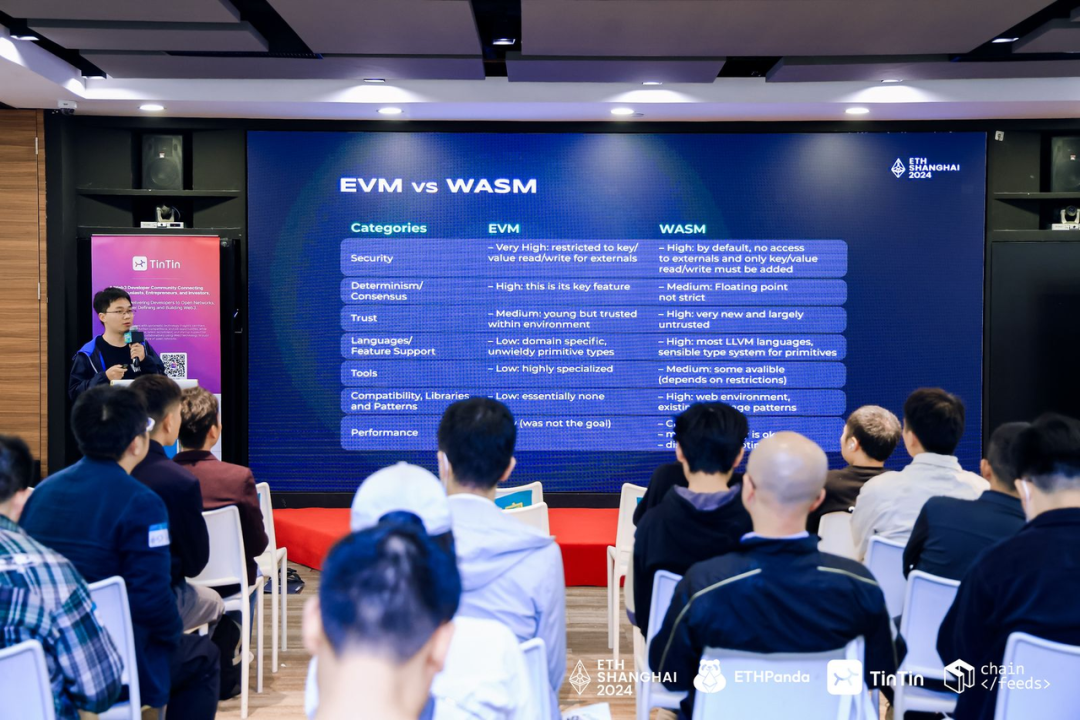
In addition, Chunyi, the head of business at Cloud Ace, also introduced the development history of Cloud Ace and how it uses Google Cloud's products to serve the Web3 industry. He said that although Cloud Ace is not a Web3 native company, it helps many Web3 customers to implement their overseas strategies and technology implementation more efficiently by providing infrastructure services including data, AI and security.
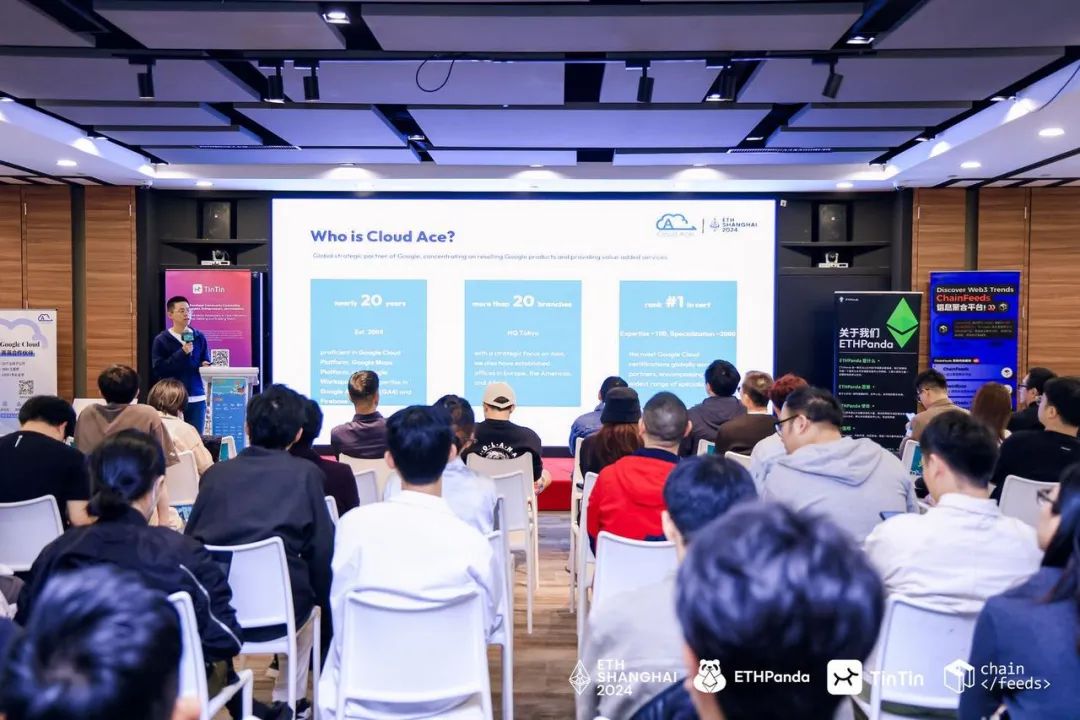
Public Goods and Decentralized Governance
In the field of public goods and decentralized governance, speakers not only reviewed past achievements, but also shared their outlook and plans for the future. Yuxin Zhu, head of GCC US , reviewed the important progress GCC has made in supporting open source projects and public goods over the past year, and shared future development directions. In the past year, GCC donated a total of approximately US$750,000 to support open source projects and public goods. Among them, US$550,000 was directly donated, and the other US$200,000 was made through cooperation with donation platforms such as Gitcoin. It is worth mentioning that in Gitcoin's funding round, GCC was the largest donor in the Chinese-speaking region, demonstrating its important role in promoting the development of open source.
Looking ahead, GCC plans to continue exploring more diverse ways to donate, especially in supporting hackathons and public goods projects with long-term impact.
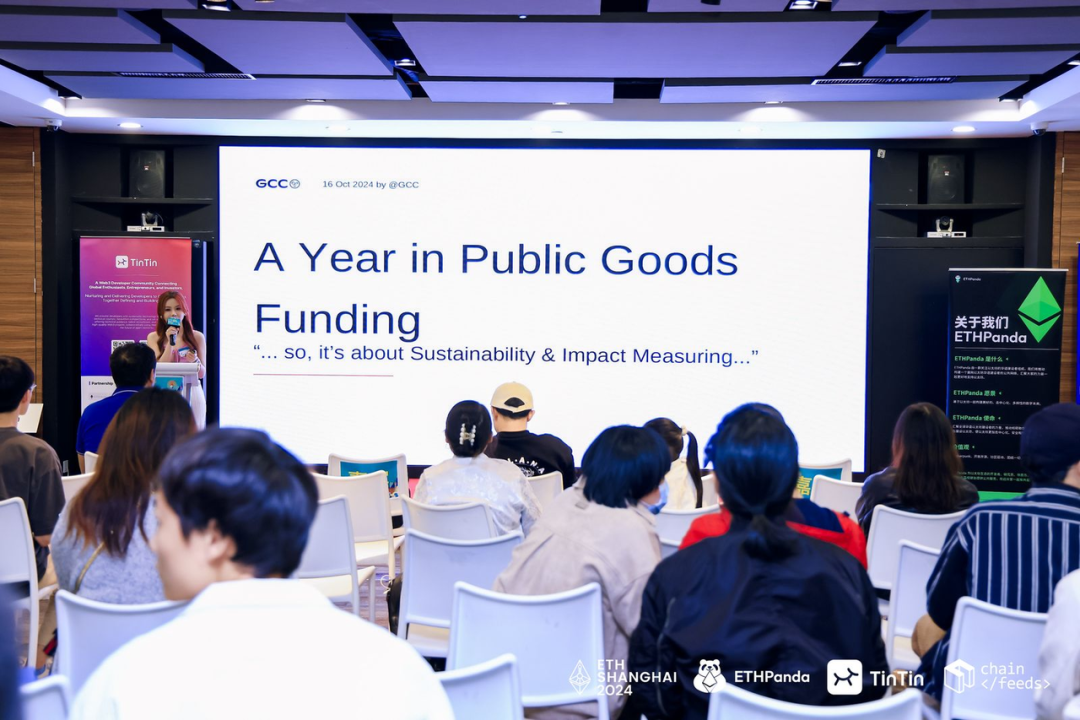
Then, in the roundtable discussion on "How can we better build Web3 public goods" , LXDAO core contributor Marcus served as the moderator and talked with GCC OP Lurenbian, ETHPanda and LXDAO core contributor Bruce and OpenBuild co-founder lan , sharing their insights on the definition, funding methods, sustainability and how to initiate public goods.
GCC OP Lurenbian mentioned that public goods are projects that are beneficial to the ecosystem but not necessarily directly commercializable. For example, many projects in the Ethereum ecosystem, although unable to generate direct profits, provide support to the core developers of the entire system and have become typical public goods. Ian, co-founder of OpenBuild, further pointed out that open source software is also an important public good in Web3, especially open source tools, data, and protocols, which all reflect a strong altruism. In terms of how to start a public good, Bruce, a core contributor to ETHPanda and LXDAO, took LX DAO as an example, emphasizing starting from identifying pain points, finding like-minded teams, and then launching projects through foundation funding.
Regarding the funding sources and sustainability of public goods, Bruce mentioned Optimism's Retroactive Funding Mechanism (RetroPGF) and Gitcoin's quadratic donations, which are common funding methods. Ian added that DAO is an effective tool for solving the management of public goods funds. Through community voting and collaboration, it can achieve fair distribution of funds and ensure the sustainable development of public goods.
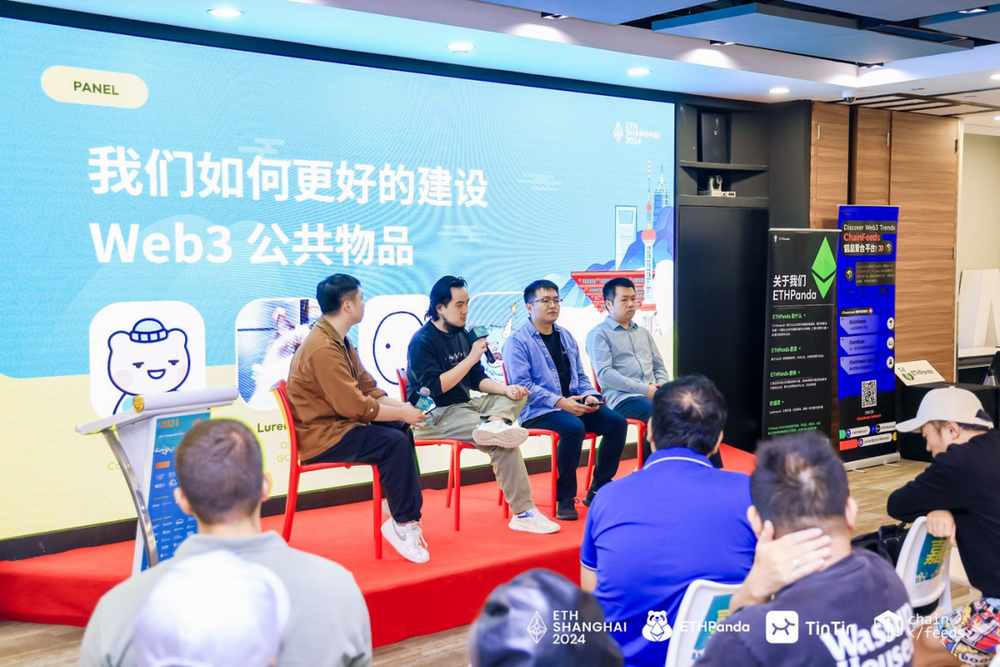
At the end of the conference, CNDAO co-founder Hu Yilin shared his understanding of public goods, digital art, and their role in the Web3 world. He pointed out that the construction of public goods stems from people's demand for better public life, which includes not only instrumental projects, but also cultural values such as literature and art. In addition, he also mentioned that the development speed of technology exceeds the pace of human life, which may lead to a sense of loss, so the digital space needs to pay more attention to the individual's pace of life. Finally, he took his own artistic practice as an example to explain the role of digital art in guiding people to pay attention to the diversity and richness of life.
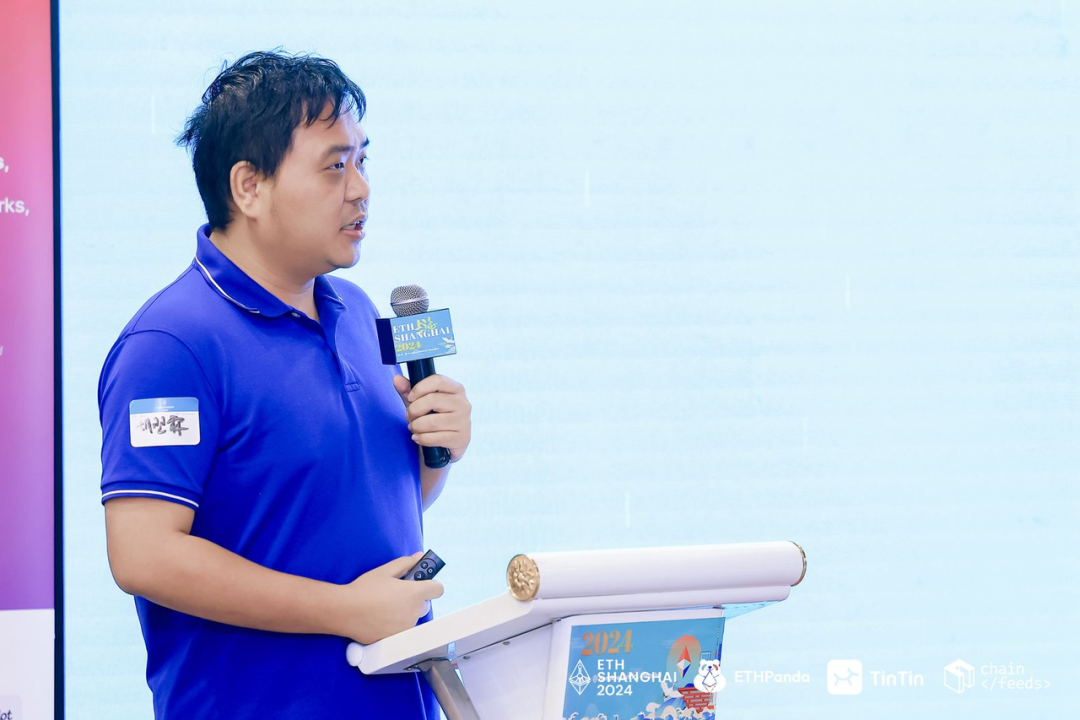
The conference would like to thank major sponsors such as Ethereum Foundation, Road to Devcon, Vara Network, CloudAce, Flow, GCC and Covalent for their strong support. In the final lucky draw, five lucky viewers won generous prizes, including two Wanxiang Summit tickets worth 699 yuan provided by Wanxiang Blockchain Lab and three Road to Devcon tickets worth 599 USDT provided by Devcon.
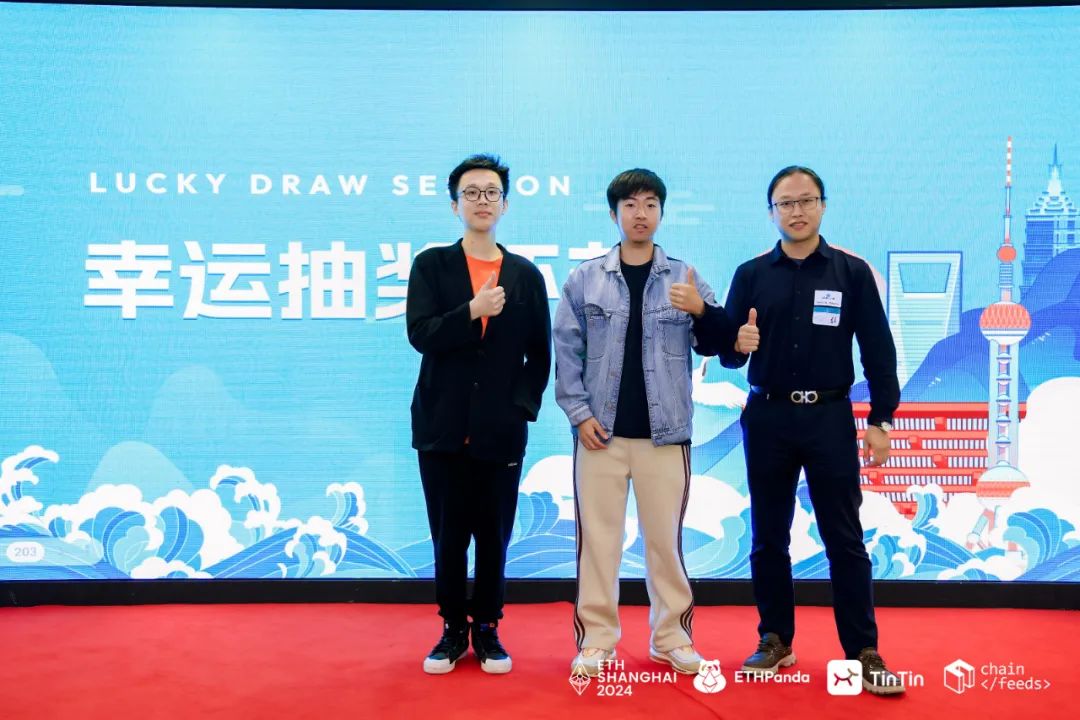
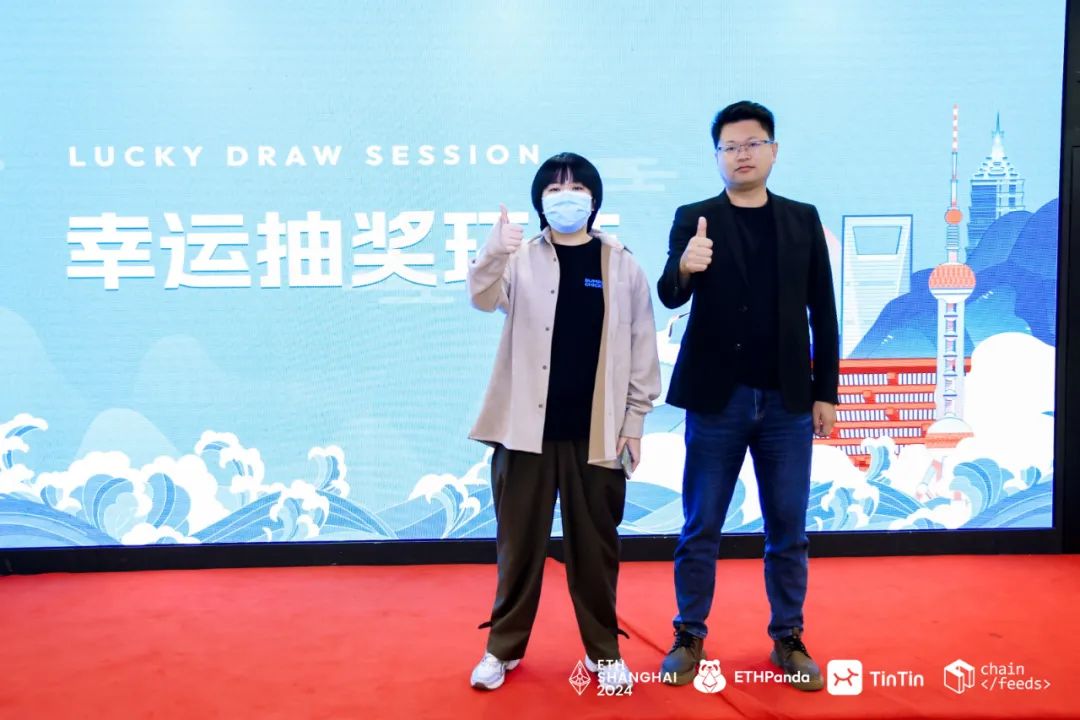
The discussion at this conference fully demonstrated that blockchain technology and Web3 ecology are at a critical stage of transformation. From Vitalik's insights on cross-Layer2, sharing of data security research to in-depth discussions on public goods , the wonderful sharing of guests and the enthusiastic interaction of participants have injected new impetus and direction into the future of this field.
I hope that everyone can take the harvest and inspiration of this conference, continue to explore innovation, and promote the progress and development of the industry. I believe that through joint efforts, blockchain technology will further shape the future and build a more open and fair digital economy.
Thank you again for your participation. We look forward to meeting you next time to meet new opportunities and challenges together.













